Over the past several years, orthopaedic surgeons have been developing new techniques, known as minimally invasive hip replacement (MIS Technique) surgery, for inserting total hip replacements through smaller incisions. It’s proven, that this allow for quicker, less painful recovery and a more rapid return to normal activities.
A field that is quickly developing is minimally invasive and small incision complete hip replacement surgery.
Some inexperienced surgeons don’t execute procedures correctly techniques have been shown to be safe, others may carry a higher risk of complications, including infection, femur fracture, wound healing issues, nerve and artery injuries, and implant misplacement, which can lead to early wear, dislocation, and loosening of your hip replacement. Patients with pronounced joint deformities, those who are large or muscular, and those who have additional health issues that may interfere with wound healing appear to be more susceptible to issues.
However, skilled surgeons like Dr. Ashwani Maichand can place the implant and perform MIS surgery without any complications. Within Dr. Ashwani Maichand’s methodology, they make an incision that is less than 8 cm long, which is a unique and precise measure.
Types of Technique of Hip Replacement
• Open Technique of Hip Replacement –
The conventional open hip replacement procedure, characterized by an incision typically exceeding 10 centimeters, is associated with several limitations and potential challenges. Patients undergoing this approach may experience restricted postoperative functional activities, including the inability to squat, sit cross-legged, perform Namaz, or utilize Indian toilets due to the larger incision and potential disruption of surrounding tissues.
Moreover, the traditional open technique is often accompanied by a notable amount of blood loss, necessitating meticulous management to maintain hemostasis. The increased surgical invasiveness may lead to a longer hospital stay, and the likelihood of requiring intensive care unit (ICU) monitoring is higher compared to less invasive approaches. Furthermore, the closure of the larger incision typically involves stitches, contributing to potential discomfort and an extended recovery period.
In terms of mobility and stability, open hip replacement may pose challenges as there is an elevated risk of hip dislocation postoperatively. This risk is exacerbated by the larger incision and the potential disturbance of anatomical structures during the procedure.
In contrast to emerging techniques, such as minimally invasive surgery with smaller incisions, the conventional open hip replacement method presents a comprehensive set of considerations that impact the patient’s immediate postoperative experience and long-term functional outcomes. The choice between surgical approaches is influenced by various factors, including patient-specific characteristics, surgeon expertise, and the desired balance between invasiveness and postoperative functionality.
• Replacement of the hip with MIS (Minimally Invasive Surgery)
MIS stands for Minimally Invasive Surgery. Minimally invasive surgery is a surgical approach that utilizes advanced techniques to minimize the size of incisions needed for certain procedures. The primary goal of MIS is to reduce trauma to the surrounding tissues, capsule, ligaments, and organs compared to traditional open surgery. This approach often involves the use of specialized instruments, endoscopic tools, and imaging technology to perform the surgery through small incisions.
Dr. Ashwani Maichand’s unique Minimally Invasive Surgery (MIS) technique not only facilitates cultural practices such as squatting, sitting cross-legged, engaging in Namaz, and using Indian toilets but also prioritizes the preservation of anatomical structures. Notably, the procedure is designed to avoid damage to the joint capsule, ligaments, muscles, and fascia. This meticulous approach ensures that the hip remains as stable as a normal hip postoperatively.
In contrast to conventional techniques, where there is an increased risk of hip dislocation, Dr. Ashwani Maichand’s method significantly minimizes this risk. The stabilized hip allows patients to resume daily activities without the apprehension of dislocation, offering a distinct advantage over traditional surgical approaches. This heightened stability is particularly crucial during significant life events such as weddings, social gatherings, where patients can comfortably sit on their feet without the fear of hip dislocation.
In essence, Dr. Ashwani Maichand’s innovative MIS technique not only addresses the medical aspects of surgery but also considers the cultural and lifestyle needs of Asian patients, providing a comprehensive and patient-centric approach to hip preservation and function.
Dr. Ashwani Maichand’s ground breaking Minimally Invasive Surgery (MIS) technique is characterized not only by its cultural adaptability but also by the meticulous surgical approach involving an incision of less than 8 cm. This limited incision size is a testament to the precision and innovation in Dr. Maichand’s methodology.
In choosing an incision size smaller than the conventional norm, Dr. Maichand continues to push the boundaries of surgical excellence. This commitment to refinement and innovation underscores his pursuit of patient-focused care, where advancements in surgical technique converge with cultural considerations, ultimately redefining the landscape of orthopedic surgery.
POTENTIAL ADVANTAGES OF MIS
- • Less pain
- • Less blood loss
- • More cosmetic incisions
- • Less muscle damages
- • Less Hospital stay
- • No stiches
Conclusion:
MIS techniques aim to enhance surgical efficiency and functional outcome by leveraging technology and skills. Dr.Ashwani Maichand has changed the ortho practice from disease centric to culture centric by his innovative surgical technique humane touch.

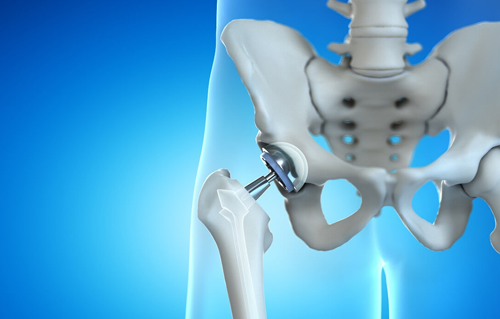
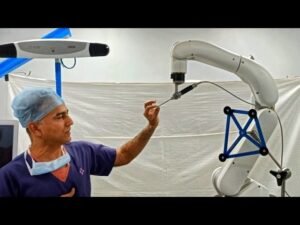
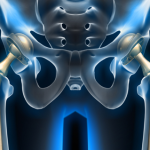
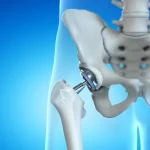
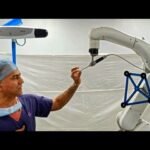

sir please suggest me for my grand father whose age is 91 years old and he got fracture in his femure neck bone fracture so suggest what will be better for his recovery
Very interesting.
Great share!” Thanks for sharing these kind of information with us.